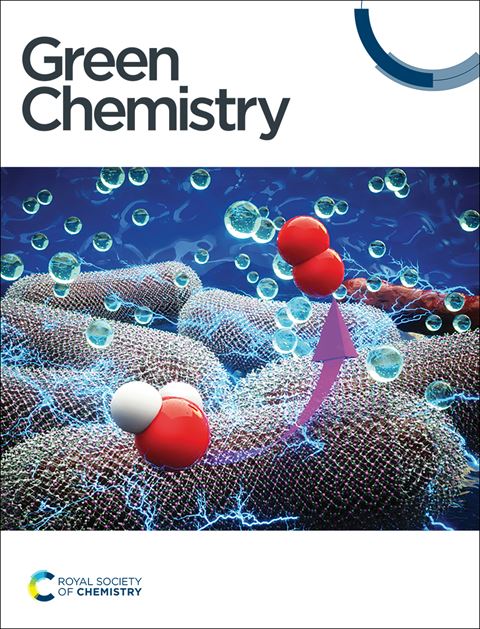温和水性胶束条件下的一锅模拟-贝克曼重排
IF 9.3
1区 化学
Q1 CHEMISTRY, MULTIDISCIPLINARY
引用次数: 0
摘要
一种可持续和环保的贝克曼重排方法已经开发出来,利用纳米胶束在温和条件下促进水中的反应。该工艺在一锅内有效地将功能化酮转化为相应的酰胺,收率高达96%。与需要大量有机溶剂的传统方法相比,它更具吸引力。该方法的可扩展性和稳健性证明了它在合成对乙酰氨基酚和ε-己内酰胺等有价值的化合物方面的潜力。本文章由计算机程序翻译,如有差异,请以英文原文为准。
One-pot oximation-Beckmann rearrangement under mild, aqueous micellar conditions†
A sustainable and eco-friendly approach to the Beckmann rearrangement has been developed, leveraging nanomicelles to facilitate the reaction in water under mild conditions. This process efficiently transforms functionalized ketones into corresponding amides in a one-pot sequence, achieving high yields of up to 96%. It is more appealing compared to traditional methods, which require significant amounts of organic solvents. The scalability and robustness of this procedure demonstrate its potential for the synthesis of valuable compounds such as paracetamol and ε-caprolactam.
求助全文
通过发布文献求助,成功后即可免费获取论文全文。
去求助
来源期刊

Green Chemistry
化学-化学综合
CiteScore
16.10
自引率
7.10%
发文量
677
审稿时长
1.4 months
期刊介绍:
Green Chemistry is a journal that provides a unique forum for the publication of innovative research on the development of alternative green and sustainable technologies. The scope of Green Chemistry is based on the definition proposed by Anastas and Warner (Green Chemistry: Theory and Practice, P T Anastas and J C Warner, Oxford University Press, Oxford, 1998), which defines green chemistry as the utilisation of a set of principles that reduces or eliminates the use or generation of hazardous substances in the design, manufacture and application of chemical products. Green Chemistry aims to reduce the environmental impact of the chemical enterprise by developing a technology base that is inherently non-toxic to living things and the environment. The journal welcomes submissions on all aspects of research relating to this endeavor and publishes original and significant cutting-edge research that is likely to be of wide general appeal. For a work to be published, it must present a significant advance in green chemistry, including a comparison with existing methods and a demonstration of advantages over those methods.
 求助内容:
求助内容: 应助结果提醒方式:
应助结果提醒方式:


